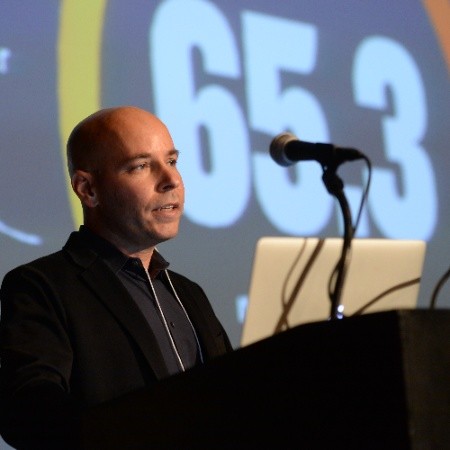On Saturday, Greenpeace announced that another company has agreed to eliminate all discharge of hazardous chemicals from its supply chain and products by 2020. This time it’s Zara, the world’s largest clothing retailer, that was the focus of the latest Greenpeace Detox campaign. After nine days of intense public pressure, both online and offline, Zara "threw in the towel" and announced it is joining Nike, Adidas, Puma, H&M, M&S, C&A and Li-Ning who have also committed to Detox so far.
The campaign followed the publication of a Greenpeace report examining a total of 141 items of clothing from 20 global fashion brands. Greenpeace’s investigation found nonylphenol ethoxylates (NPEs) in 89 garments (63 percent). In addition, high levels of toxic phthalates were found in four of the garments (made by Armani, Victoria’s Secret and Tommy Hilfiger), and cancer-causing amines from the use of certain azo dyes in two garments made by Zara.
As always, the Greenpeace campaign yielded not just impressive results, but also some valuable lessons. Here are five of them:
1. Companies can’t decide anymore where their responsibility ends. Others decide it for them.
My guesstimation is that Zara (or the Inditex group, of which Zara is one of its brands) didn’t think the use of hazardous chemicals in its supply chain was its responsibility. Otherwise, the brand wouldn’t have waited for Greenpeace to force it to take responsibility for it.
While some companies still think they are the ones deciding where their responsibility ends, this example of Zara shows once again that stakeholders are the ones making this call. Companies need to realize that any attempt to set up arbitrary limits is useless, as NGOs and consumers are becoming impatient with anything less than full responsibility for the value chain, or at least all of its critical parts.
2. “Everything has changed, and nothing has changed”
After looking at Greenpeace’s report, I can better understand what BSR’s Aron Cramer meant when he said that as part of his reflection on the past 20 years. After all, just look at the apparel/textile industry. On the one side we have the Higgs Index, Puma’s EP&L, M&S shwopping, Nike’s innovative initiatives, Levi’s water reduction efforts, and so on. On the other side, you have NPEs in 63 percent of all items tested, not to mention the toxic phthalates and the azo dyes.
It only goes to show you how little we know about the big picture, and how difficult it is to evaluate where the industry really stands. Has it made meaningful progress so far? Yes. Is it enough or satisfactory? No. If, in 2012, we can still find NPEs in most of our clothes, it means that sustainable fashion is very far away. It also means that we need a better evaluation measurement to know how well apparel companies are really doing.
3. Transparency is critical
I was glad to see that Inditex made a commitment to improve its supply chain disclosure, including, “beginning public disclosure of discharges of hazardous chemicals in its supply chain via individual facility level disclosure of chemical use and discharges data.” Transparency is critical for stakeholders who want to keep companies accountable. After all, someone still needs to make sure that Zara meets its goals and without transparency, it’s really hard to do it.
4. Market leaders beware – you’re next
Greenpeace made it very clear why it went after Zara. “Its sheer size and scale mean Zara is ideally positioned to be a catalyst for wider change within the clothing industry. Suppliers listen to brands like Zara because they provide them with such huge amounts of business, and as an industry leader it is clear that where Zara goes, others will soon follow.”
The same logic works in almost every industry, which is why Greenpeace focused its past campaigns on companies like Mattel, Kimberly-Clark, Facebook, McDonald’s, Nestle and others. Not all market leaders seem to be worried about the fact that the size of their business could make them a potential target of the next campaign (Amazon is a good example). But, as Apple has shown, no one, not even the most successful company, is immune to criticism, so market leaders know, if you don’t take care of your value chain, your turn will come.
5. You want to change a company? Run a campaign like Obama.
Greenpeace succeeds where so many others fail because it knows how to run a campaign. Just like the Obama campaign, it is a master at integrating all the different parts, using social media, carefully paying attention to details, combining creativity, innovation and good understanding of its target market and, finally, staying focused on the goal.
What’s even more impressive about Greenpeace’s campaigns is that Greenpeace manages to keep their relationships with the companies it targets on good terms, so once the companies decide to change their practices they can work together to make it happen. In this case, maybe the Obama campaign can learn from Greenpeace.
[Image credit: greenpeace.org]
Raz Godelnik is the co-founder of Eco-Libris and an adjunct faculty at the University of Delaware’s Business School, CUNY SPS and the New School, teaching courses in green business, sustainable design and new product development. You can follow Raz on Twitter.

Raz Godelnik is an Assistant Professor and the Co-Director of the MS in Strategic Design & Management program at Parsons School of Design in New York. Currently, his research projects focus on the impact of the sharing economy on traditional business, the sharing economy and cities’ resilience, the future of design thinking, and the integration of sustainability into Millennials’ lifestyles. Raz is the co-founder of two green startups – Hemper Jeans and Eco-Libris and holds an MBA from Tel Aviv University.














